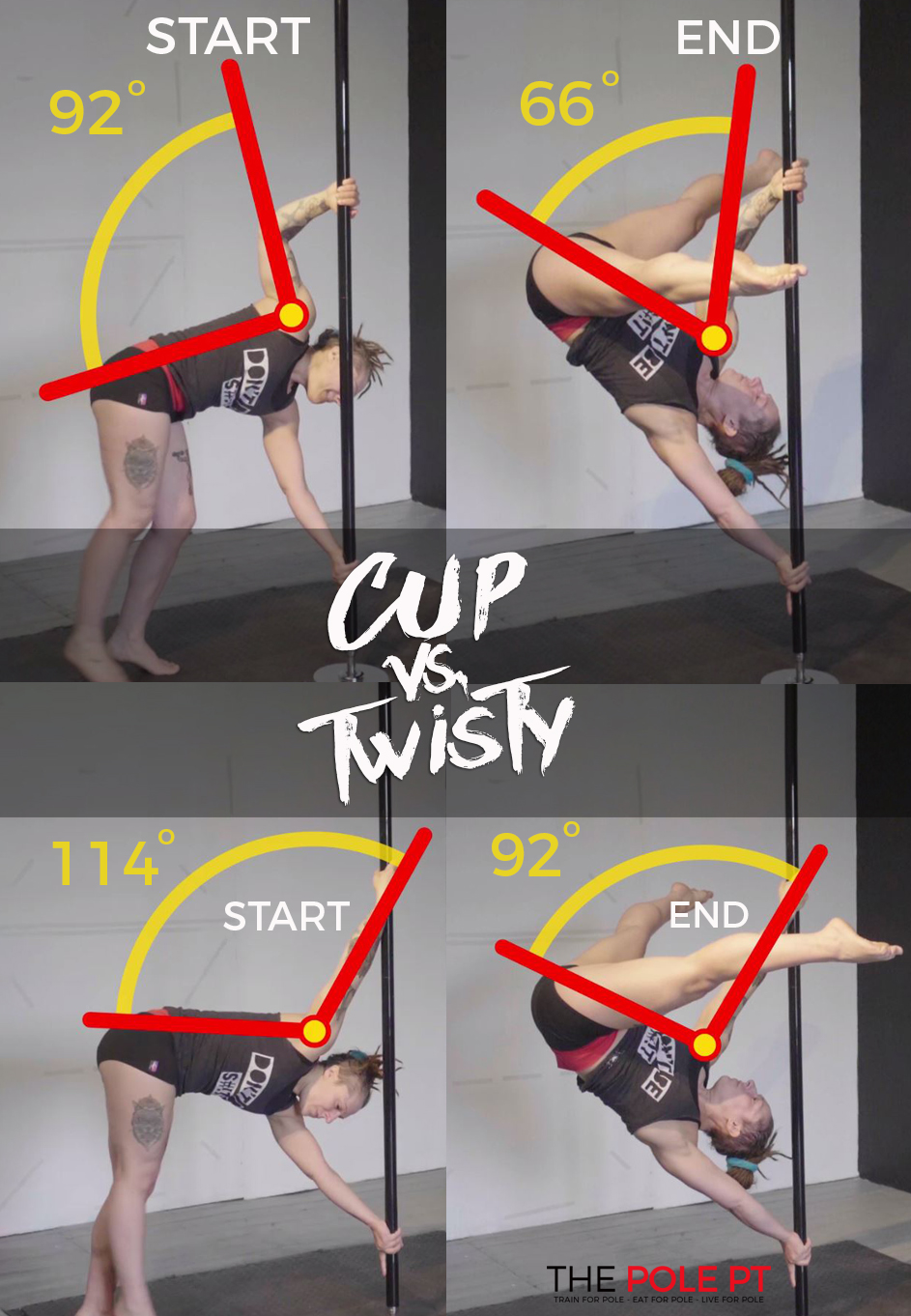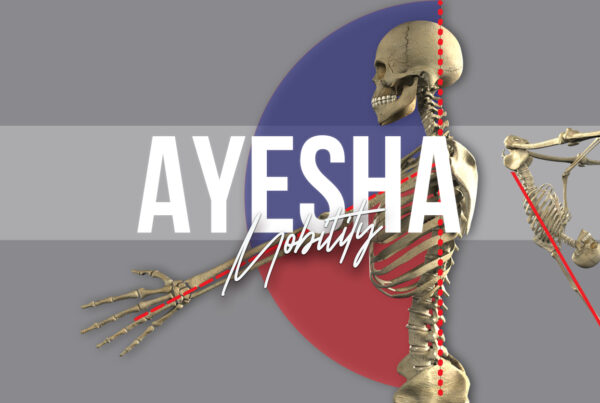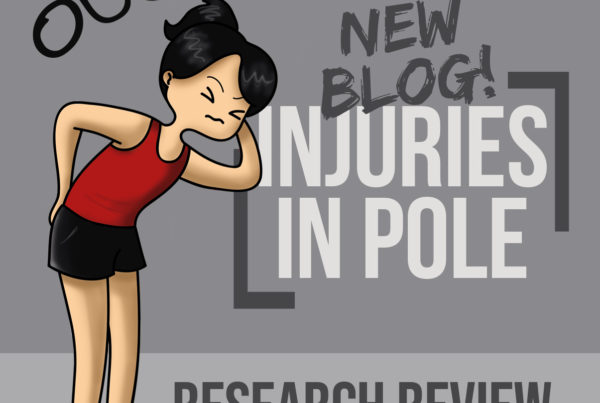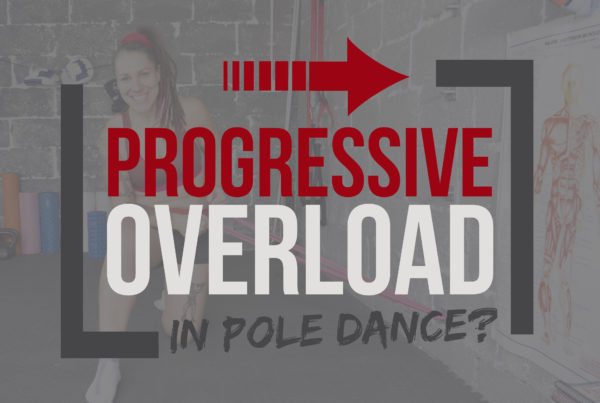For the final part of my Twisted Grip series, I’d like to actually move the focus AWAY from twisted grip. But bear with me, it’s still ‘on topic’, I promise.
As wise owl Sarah Scott pointed out with her ‘twisted grip is chocolate cake’ analogy, too much of a good thing is not always a good thing. In Part 1 and Part 2 of this blog series, we’ve already talked about the importance of avoiding overburdening our shoulders with too much repetition; just like getting the balance of cake and greens in our diet, including variety in our movement patterns is important too.
Twisted grip may feel like a comfy old security blanket, and cup grip a little like you are dangling precariously off the edge of a cliff face with only a sloth’s paw grip between you and impending doom, but getting comfortable with cup grip will level up your pole movement vocabulary BIG TIME.
Not only that, but of all the different grip positions, cup grip is the one best placed to be the antithesis broccoli to the chocolate cake of twisty, because it essentially overcomes most of the “issues” that twisted grip presents.
Here’s a quick reminder of the biomechanical differences between the positions.
In cup grip, the top arm is in a more neutral position throughout the movement = no internal rotation issues.
In cup grip, the top arm doesn’t start in an overhead position. Obviously, this depends on how you set up for your cup grip handspring, but in my experience twisted grip is usually taught with your body positioned directly in line with the pole (so your top arm is slightly overhead) and cup grip is taught with your body slightly to the side of the pole (so your top arm is about 90 degrees from the body at the start point. This removes the potentially tricky overhead AND internally rotated part of the twisted grip version.
In cup grip, the top arm is bent, which allows much better engagement and control of the top arm and shoulder, prevents you ‘hanging’ on that top shoulder and creates more balance between the ‘push/pull’, taking some of the strain off your bottom arm!
Yey cup grip!
But I know, I know, cup grip is harrrrd. I hear ya.
That’s why I wanted to share some of my favourite off the pole exercises that will help you to build strength, confidence and body awareness to create a solid foundation for learning the cup grip handspring.
We’ll focus on the upper body strength that is required for this move as this tends to be the weak point for most pole dancers.
These exercises mirror the movement patterns you will use in your cup grip handspring but in a safe, ‘right way up’, off-the-pole position, so that when you do start to learn the skill and technique for the cup grip handspring ON the pole, your body will have a head start – it will recognise those movement patterns, be confident that you are strong there and already know how to engage the right muscles to keep you safe and stable.
FIRST – THE BOTTOM ARM…
Your bottom arm in a cup grip handspring or Ayesha is pressing overhead at about 180 degrees, so including some overhead pressing exercises in your training will really help you to strengthen that position.
Ultimately, my favourite exercise for this is actually handstand training – whether it’s full handstands, kicking up against the wall, or other forms of handstand progressions like those shown below.
Handstands are perfect for training handspring strength… upside down ✔ core training ✔ body awareness ✔ vertical press ✔
Here’s one of my go-to progressions:
I would also include the single arm downdog exercise that I included in my last blog on twisted grip to help you get used to the feeling of pressing and keeping the shoulder engaged as you move through the torso rotation into that position. Here’s a reminder of that exercise:
That last exercise is perfect for including in the mobility / muscle activation of your warm up.
TOP ARM CONDITIONING FOR THE CUP GRIP HANDSPRING
Cup grip Exercise 1 – vertical pull
Pull up progressions are great for this – my go-to exercises would be pull up holds:
And pull up negatives:
Cup grip exercise 2 – horizontal pull
For the horizontal pulling strength, horizontal pulls using a suspension trainer are awesome!
Cup grip Exercise 3 – rotational pull
Adding a unilateral element and some rotation to that pulling movement is also super useful for the Ayesha and handspring…
Obviously, there is a lot more going on with the handspring than just the upper body – but incorporating these off the pole exercises will set you up for success with your cup grip handspring and create the perfect foundation for layering on the skill and technique training that you will then need to do on the pole to achieve this advanced, pole ninja (level 100+) move.
Ready to convert to cup grip? Let’s do it!
As always, I’d love to hear your comments!
If you’re working on your Ayesha… My 6-week Ayesha programme is the one! All the upper body, lower body and core exercises you need – on and off the pole – to get you there – working on all 3 grips! Download and start training for your Ayesha today!
If you’d like to geek out more with me on the anatomy of pole dance, or you want more details on how to programme your training to reduce risk of injury, check out my books – Strength and Conditioning for Pole – and Pole Anatomy! Available now in hard copy or downloadable ebook.








